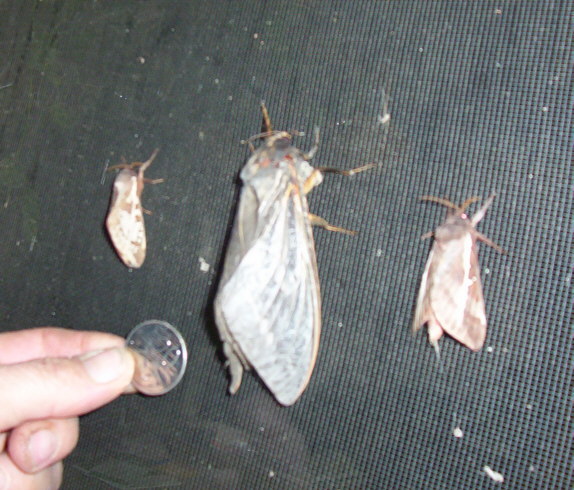
Wild Windellama
by Paul Alessi
June 2006
Peron's Tree Frog (Litoria peroni)
It's a mighty
difficult time for all of us with it being so dry but imagine how
hard life
would be if you were a frog, tree frogs spend part of their life
cycle surprisingly enough
in trees and this little frog was quite happy living in the
bottom of a disused water tank
on top of a hill beneath some trees, there were only a few
centimetres of water left in the tank
and we needed to move it before the wind did the job for us.
We took his picture
so we could work out just what sort of frog he was but left the
water tank on the hill for a few days until he had moved on. He
turned out to be a
Peron's Tree Frog, otherwise known as the Maniacal Cackle Frog
and their call
sounds something like a long drawn out "
Cra-ah-ah-ah-ah-ah-ah-ah-ahhk"
a crazy sort of call but one that matches those crazy clown like
crossed eyes.
Peron's Tree Frogs
are common in Eastern Australia and they can be found
a long way from natural water, one striking feature is the bright
yellow and black mottling
on their armpits, groin and the back of their thighs, the rest of
their body is pale grey or brown
and the easiest way to recognise this species is the crosses on
their eyes.

Giant Wood Moths
A surprise visitor
to our kitchen window insect screen a few weeks ago was a giant
wood moth,
seen here beside two of his bogong friends, unfortunately this
big fella
flew off before I could identify him properly. There are well
over 80 species of
giant moths in eastern Australia, some of which are the largest
moths in the world.
In their larval
stages they are known as Witchetty Grubs and spend the early part
of their lives boring holes through live trees. Some giant moth
species prefer Eucalypts but
around Windellama there are many moth species dependant on
Wattles.
When they emerge as adult moths they leave their old skin behind
as a hollow tube like shell
sometimes sticking out of the ground amongst the Wattles, many
moth species wait for rain
and then darkness before emerging and these moths on our window
screen had made
an optimistic dash after a few rare rain showers.
The lifecycle of
Giant Wood Moths is approximately one year but most of that is
spent as a larvae
and their time as flying creatures is very short, sometimes just
a few days.

Copyright
Paul Alessi 2006